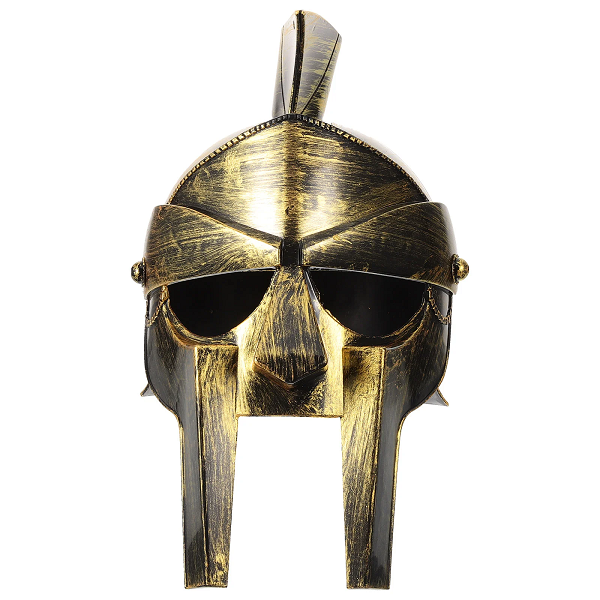Introduction to Greek Helmets
Greek helmets are more than mere metal headgear. They represent a significant part of historical and cultural heritage. Over the centuries, these helmets have fascinated archaeologists, historians, and enthusiasts alike. From the sturdy Corinthian helmet to the distinctive Spartan version, each style tells a story. Greek helmets were not just about warfare; they also carried symbolic and artistic value. In this comprehensive guide, we will explore the history, types, and cultural significance of Greek helmets.

The Historical Background of Greek Helmets
Early Beginnings
The history of Greek helmets dates back to ancient times. Helmets were an essential part of a warrior’s armor and provided vital protection in battle. Initially, early Greek helmets were simple leather caps. These caps offered minimal protection. As warfare evolved, so did the need for more robust protective gear. Metal soon replaced leather as the primary material for helmet construction. This shift marked the beginning of a new era in Greek military equipment.
Influence of Other Cultures
Ancient Greece was not isolated. It interacted with various cultures through trade, war, and diplomacy. These interactions influenced the design and evolution of Greek helmets. For instance, neighboring civilizations like the Persians and Egyptians had their own versions of protective headgear. Greeks adopted and modified these designs, adding their unique touches. This blend of influences enriched Greek helmet designs, making them more versatile and effective.
Development Phases
Greek helmets went through several developmental phases. Each phase saw improvements and refinements. Early designs focused mainly on protection. Later designs also considered comfort and aesthetics. The evolution of the helmet reflects changes in Greek warfare tactics, materials available, and even social factors. From plain and functional designs, helmets became more intricate and decorative over time.
Types of Greek Helmets
The Corinthian Helmet
The Corinthian helmet is perhaps the most iconic Greek helmet. Originating from the city of Corinth, this helmet became widespread during the 7th century BCE. The design featured a full-face cover, leaving only small slits for the eyes and mouth. This provided excellent protection but limited peripheral vision. Made from a single piece of bronze, the Corinthian helmet was both sturdy and imposing. It often featured a distinctive crest of horsehair, adding to its grandeur.
The Spartan Helmet
The Spartan helmet, known as the “Piloi” or “Leukaspides,” was another iconic design. Spartans were famous for their military prowess. Their helmets mirrored this reputation. Unlike the Corinthian helmet, the Spartan version was simpler and more pragmatic. It provided adequate protection while allowing greater visibility and hearing. Made from bronze, it featured cheek guards and a nose guard. The helmet’s simplicity and effectiveness made it a favorite among Spartan warriors.
The Chalcidian Helmet
The Chalcidian helmet took its name from the Greek city of Chalcis. It struck a balance between protection and comfort. This helmet provided better visibility and hearing compared to the Corinthian design. It featured a flared neck guard and hinged cheek pieces. The Chalcidian helmet became popular in the 5th century BCE and was favored by many Greek soldiers.
The Thracian Helmet
The Thracian helmet featured a more ornate design. Originating from the region of Thrace, it included high-arched cheek pieces and a distinctive, broad-rimmed visor. The design allowed better protection for the face and head while offering good visibility. The Thracian helmet often featured intricate decorations and engravings, showcasing the craftsmanship of Greek artisans.
The Boeotian Helmet
The Boeotian helmet was a more open design. It resembled a wide-brimmed hat and was influenced by the helmets used by Greek cavalry. This helmet provided good protection while allowing excellent visibility and hearing. It was less restrictive than other helmet designs, making it a practical choice for mounted soldiers.
The Materials and Craftsmanship
Bronze: The Primary Material
Bronze was the material of choice for Greek helmets. Known for its durability and malleability, bronze was perfect for crafting protective gear. The process of making a bronze helmet involved heating and hammering the metal into the desired shape. Artisans paid great attention to detail, ensuring the helmet was both functional and aesthetically pleasing.
Leather and Linings
Leather played a secondary but essential role in helmet construction. Often, the interior of a bronze helmet was lined with leather. This lining provided additional comfort and cushioning for the wearer. Leather straps were also used to secure the helmet onto the head, ensuring it stayed in place during battle.
Decorative Elements
Greek helmets were not just about functionality. They also served as a canvas for artistic expression. Many helmets featured intricate engravings, embossed designs, and even precious metal inlays. These decorative elements showcased the craftsmanship of Greek artisans. They also added a sense of prestige and honor to the helmet, making it more than just a piece of military equipment.
The Role of Helmets in Greek Warfare
Essential Protection
Helmets were a crucial part of a Greek warrior’s armor. They provided essential protection for the head, one of the most vulnerable parts of the body. In battle, a well-crafted helmet could mean the difference between life and death. The helmet protected the warrior from blows, arrows, and other projectiles.
Psychological Impact
Wearing a helmet had a psychological impact on both the wearer and the enemy. For the wearer, the helmet provided a sense of security and confidence. For the enemy, the sight of a fully armored soldier, face hidden behind a menacing helmet, was intimidating. The psychological aspect of warfare cannot be underestimated, and helmets played a significant role in this regard.
Symbol of Status and Rank
Helmets also served as a symbol of status and rank within the Greek military. Higher-ranking officers often had more decorated and elaborate helmets. These distinctions helped identify leaders on the battlefield and conveyed their authority. A decorated helmet was a mark of honor and prestige, reflecting the warrior’s achievements and status.
Cultural and Artistic Significance
Helmets in Ancient Greek Art
Greek helmets frequently appeared in ancient Greek art. From pottery to sculptures, helmets were a common motif. They symbolized strength, bravery, and martial prowess. Artists paid meticulous attention to detail, capturing the different helmet designs accurately. These artistic depictions offer valuable insights into the design and use of helmets in ancient Greece.
Mythology and Helmets
Greek mythology also featured helmets prominently. Gods and heroes were often depicted wearing magnificent headgear. For instance, Athena, the goddess of wisdom and warfare, was often shown wearing a helmet. This association with divine figures added to the helmet’s symbolic value. It became a representation of divine favor and protection.
Modern Interpretations
The cultural and artistic significance of Greek helmets continues to influence modern interpretations. In films, video games, and literature, Greek helmets often symbolize heroism and nobility. These representations keep the legacy of Greek helmets alive, connecting ancient tradition with contemporary culture.
Preservation and Discovery
Archaeological Findings
Numerous Greek helmets have been discovered through archaeological excavations. These findings offer invaluable insights into ancient Greek warfare, craftsmanship, and culture. Many of these helmets are well-preserved, providing a glimpse into the past. They help historians piece together the evolution and usage of helmets over the centuries.
Museums and Exhibitions
Today, many Greek helmets are displayed in museums around the world. These exhibits allow the public to appreciate the craftsmanship and historical significance of these artifacts. Museums play a crucial role in preserving and showcasing these helmets, ensuring their legacy endures.
Restoration Efforts
Restoring ancient helmets is a delicate process. It involves careful cleaning, conservation, and sometimes reconstruction. Specialists use advanced techniques to preserve the integrity of the helmet while making it suitable for display. These restoration efforts ensure that future generations can continue to learn from and appreciate these historical artifacts.
Conclusion: The Lasting Legacy of Greek Helmets
In conclusion, Greek helmets are more than just historical artifacts. They represent the ingenuity, craftsmanship, and cultural richness of ancient Greece. From their early beginnings as simple leather caps to the sophisticated bronze masterpieces, Greek helmets have evolved remarkably. They played a crucial role in warfare, offering protection and psychological advantage. Beyond the battlefield, they held cultural and artistic significance, appearing in art and mythology. Today, Greek helmets continue to captivate our imagination, inspiring modern interpretations in various media. Through archaeological discoveries, museum exhibits, and restoration efforts, the legacy of Greek helmets endures, connecting us to a bygone era and its timeless traditions.




